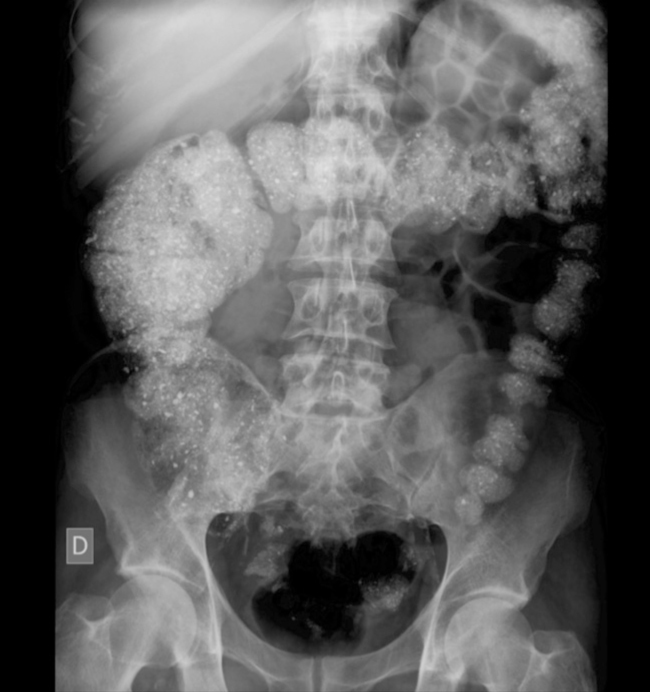To the Editor,
Hyperphosphataemia is a complication of chronic kidney disease (CKD) which is often accompanied by hypocalcaemia and low serum vitamin D levels. Without treatment, these deficiencies generally lead to severe secondary hyperparathyroidism. Restricting dietary phosphate is key to treating this condition, but this approach alone is not sufficient to control hyperphosphataemia. As a result, oral phosphate binders are used by more than 90% of patients with CKD.1
Lanthanum carbonate is a non-calcium, metal-containing phosphate binder used in hyperphosphataemia treatment. This trivalent cation forms ionic bonds with phosphate. Precipitation of insoluble complexes then takes place in the intestinal lumen. Due to the very low degree of absorption by the gastrointestinal tract (<0.0013%), an abdominal radiography will show radiopaque images of lanthanum carbonate, which may slow intestinal transit as a side effect.2 Recent studies have shown that this may cause or worsen diverticular colitis, which would increase serum lanthanum levels. In conclusion, caution must be exercised when using this drug in patients with diverticula.3
We present the clinical case of a 55 year old patient with CKD treated with periodic haemodialysis, secondary hyperparathyroidism and severe hyperphosphataemia, mainly due to poor dietary compliance. Therefore, we prescribed a non-calcium phosphate binder, lanthanum carbonate (Fosrenol®), since the patient also presented significant peripheral vascular disease of ischaemic origin and the aim was to reduce the risk of vascular calcifications. The patient came to the Emergency Department on two occasions due to abdominal pain and constipation, and was admitted to the General Surgery Department the second time for suspected diverticulitis. The abdominal CT revealed uncomplicated sigmoid diverticulitis.
One month after being discharged from the hospital, the patient returned with abdominal pain, constipation, nausea and vomiting, and was then admitted by our Nephrology Department. Examination showed peristaltic activity and diffuse abdominal pain. Laboratory test results were uneventful (absence of leukocytosis; amylase and lipase within normal ranges). In both the preliminary and current radiographies, as shown in Figure 1, we can observe abundant deposits of lanthanum carbonate in the colon and dilated intestinal loops consistent with the ingestion of lanthanum carbonate 3g/daily for 3 months. The diagnosis was intestinal pseudo-obstruction secondary to persistent constipation due to lanthanum carbonate. That drug was suspended; with administration of two cleansing enemas and the addition of an oral osmotic laxative (Duphalac®) the clinical symptoms resolved completely.
Hyperphosphataemia is closely related to developing a risk of cardiovascular disease with tissue ischaemia and calciphylaxis in CKD, and with an increase in fibroblast growth factor 23 and secondary hyperparathyroidism.
However, when faced with preventing such complications, we must be mindful of the fact that treating hyperphosphataemia with lanthanum carbonate presents a risk of developing abdominal symptoms such as those described here. We recommend closely monitoring tolerance-based doses in order to prevent related complications.4
Figure 1. Intestinal pseudo-obstruction due to lanthanum carbonate







